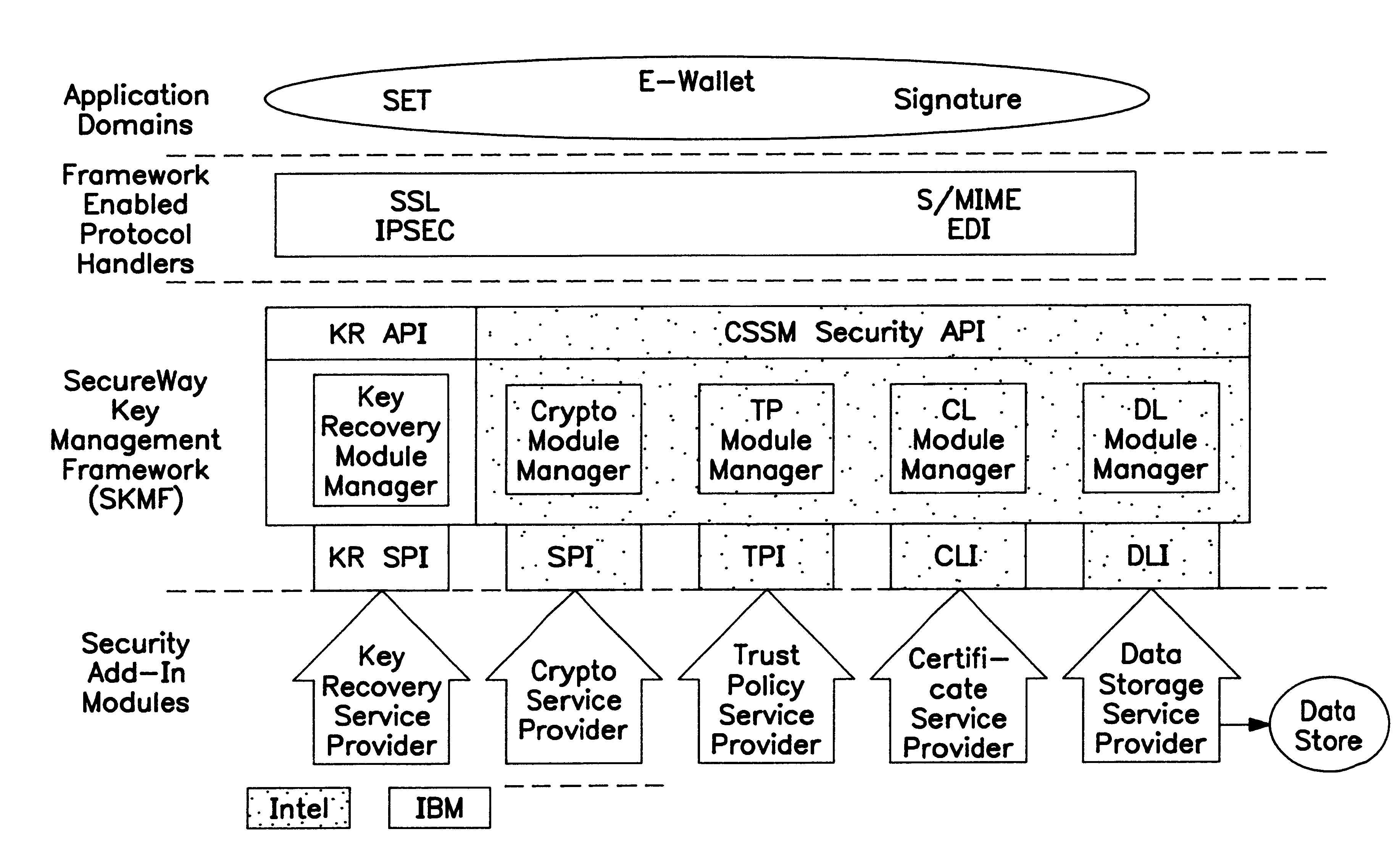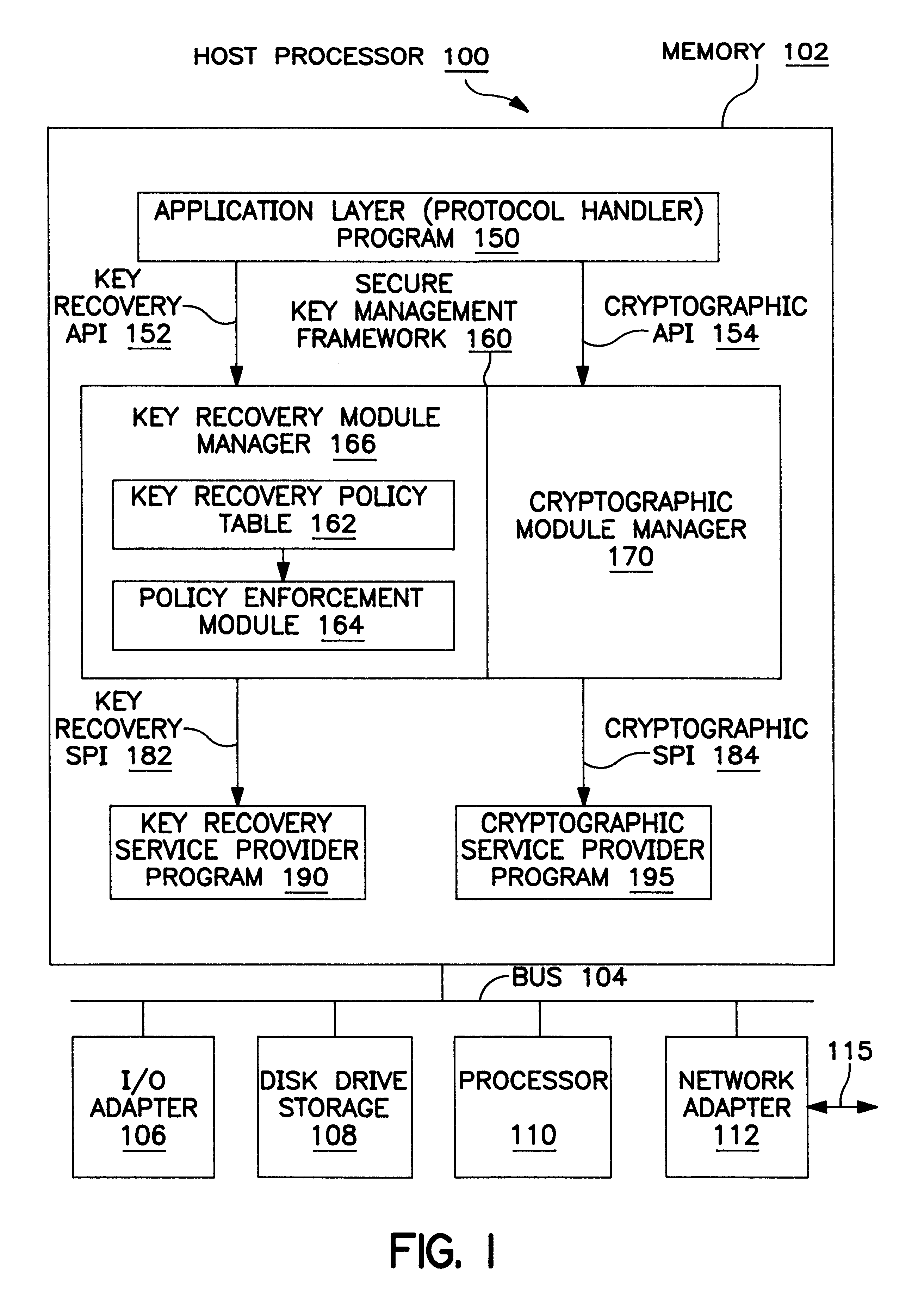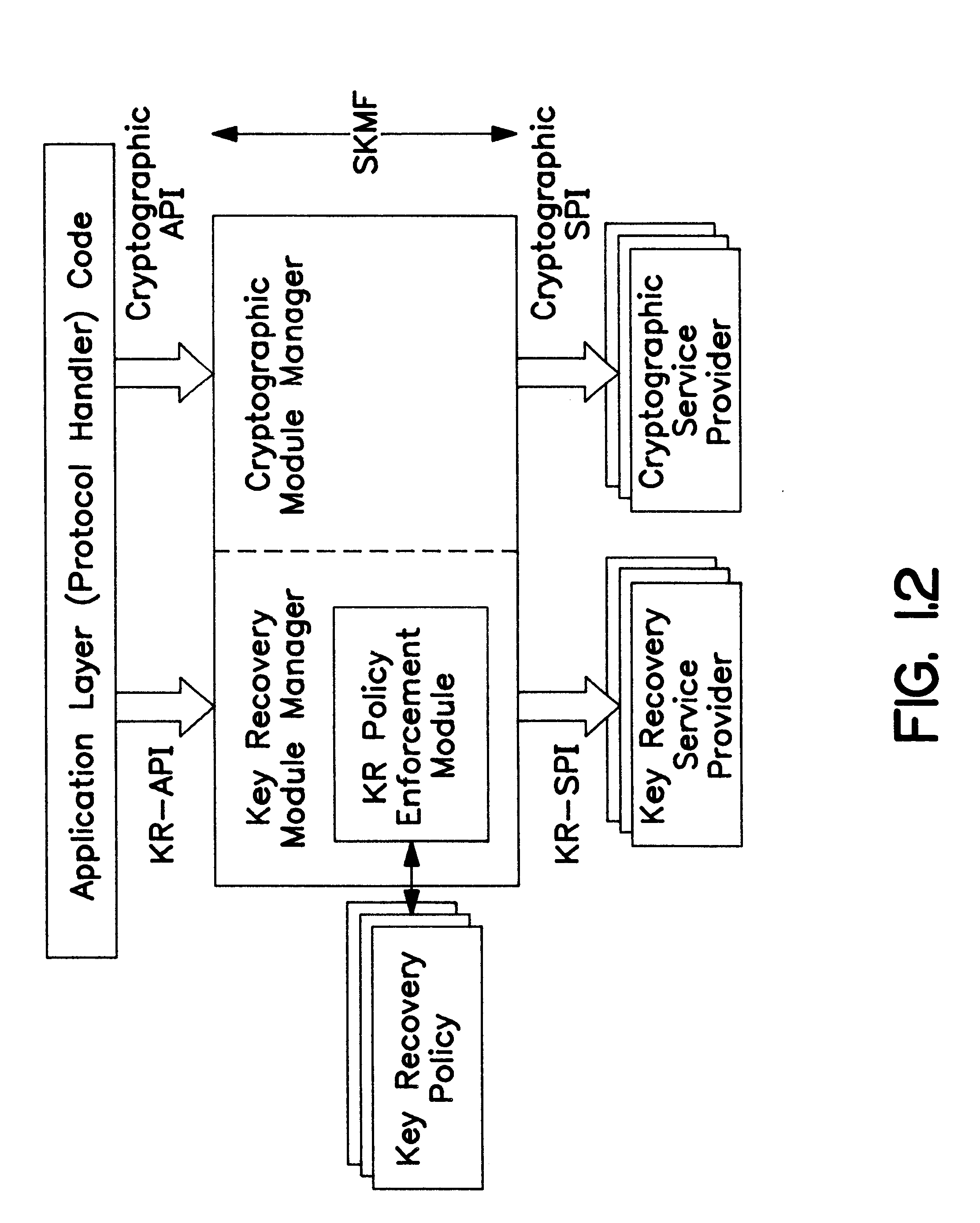This conflict becomes especially apparent when users' applications begin to use strong
encryption techniques, which can either be too expensive or impossible to break within reasonable time.
This is a major hindrance for manufacturers and vendors of cryptographic products since the market for their
encryption products is severely restricted by such jurisdiction-based controls.
Most currently available or proposed architectures for key-recovery-enabled cryptographic systems are somewhat restrictive and inflexible.
The design of some of these products is based on restrictive assumptions such as all users need to be certified under a common
public key infrastructure (PK).
Others products are very inflexible since they bundle a specific key
recovery mechanism with a specific key transport mechanism or a specific cryptographic engine.
Others support a single proprietary key
recovery mechanism, which may not be acceptable for export to certain jurisdictions that choose not to adopt or legislatively support that key
recovery mechanism.
With
escrow schemes for long terms private keys, a major
advantage is that the cryptographic communication protocol needs minimal
adaptation (since the key recovery fields and the
key exchange block are one and the same in most cases); however, the serious disadvantages are the lack of privacy for individuals (since their private keys are held by a separate entity), and the lack of
granularity with respect to the recoverable keys.
Additionally, there is the burden that every individual has to obtain and use public keys through an approved
public key infrastructure in order for the key recovery scheme to work.
A
disadvantage is that the communication protocol between sending and receiving parties needs more elaborate
adaptation to allow the flow of the encapsulated key (which is separate from the
key exchange block.)
There are a number of important issues specific to the implementation and operation of the key recovery servers, such as
vulnerability and liability.
There may be some mechanism for vendor-controlled updates of such law
enforcement key recovery policies in existing products; however, organizations and end users of the product are not able to modify this policy at their discretion.
We have already established that there are several strong incentives for developing key-recovery-enabled cryptographic systems, and that existing implementations are seriously lacking in terms of flexibility and
extensibility.
Since, different countries around the world support different key recovery systems, embedding a single key recovery mechanism into the cryptographic engine is counterproductive, since the composite product may not be suitable for use in certain jurisdictions.
Additionally, there is a burden on the vendors of cryptographic service providers (CSPs) to incorporate key recovery mechanisms that are, by and large, unrelated to the central purpose of the product.
Noncircumventability implies that the
application layer code using the SKMF to obtain cryptographic services cannot bypass the framework to directly access the service providers underneath.
Note that this property must be guaranteed by the framework itself, since individual recovery mechanisms may be unconcerned with the presence of other recovery mechanisms and services in a system.
For products using key recovery (
escrow or encapsulation) techniques, the key recovery policy stipulates that when using strong
encryption, the sending side cannot perform data encryption without producing the necessary key recovery fields, and that the receiving side cannot perform
data decryption without
processing the relevant key recovery fields.
However, if the application layer code on both the sending and receiving sides are ill-behaved and are acting in collusion, then there are various
cut-and-paste attacks that c an be mounted such that the key recovery fields either do not flow between sender and
receiver, or flow out-of-band with the session; thus the key recovery enablement operation is inhibited.
Full inter-
operability in this
scenario is a little more tricky since the sending side sends over the key recovery fields along with the session data, but the receiving side has to be able to ignore the additional fields and proceed with the decryption step.
If the application layer code on the sending side is well-behaved, the key recovery operation is successful; however, if the application code on the sending side is ill-behaved, and does not send the key recovery fields as part of the session, the key recovery enablement operation is inhibited.
Since the sender has no notion of a key recovery fields, inter-
operability in this case is nebulous at best.
In this case, it may not be feasible to ensure the flow of the key recovery fields within the session from the sender to the receiver since the key recovery fields is not really needed for
data decryption.
In this case, there is a very
tight binding between the key recovery fields and the session data, but the inter-
operability scenarios (b) and (c) become difficult, since the non-key recovery systems will not know how to reconstruct the decryption key using the key recovery fields.
If the context is flagged as unusable, the encryption / decryption API function returns an error.
It may be argued that this approach exposes the key recovery APIs to the protocol handler code, and that this may be undesirable; we claim that the protocol handler code will have to be key recovery aware, whether we
expose the KR-API to the application or not.
On the other hand, hiding the KRMM under the crypto module manager, or incorporating the KR mechanism into a CSP has the obvious
disadvantage that the CSP needs to be modified, and needs to be cognizant of specific KR mechanisms.
In the above
scenario, after the key handles (and keys) are destroyed there is no practical way to
decipher the contents of the encrypted message A sent to B by any law-
enforcement agency.
If good or strong encryption is used, deciphering the encrypted message is impractical (i.e., either too expensive or impossible to
decipher in usefull time).
Note that without
processing the KR fields, B could not obtain
handle HB2 and, consequently, could not decrypt the message.
Hence, the SKMF cannot be bypassed.
Whenever a service provider contains cryptographic capabilities, and is packaged as a dynamically-linkable
library module, there are issues with respect to its availability to applications that are not based on the SKMF architecture.
There are a number of issues with respect to the installation and configuration of a product based on the SKMF architecture.
 Login to View More
Login to View More  Login to View More
Login to View More 


